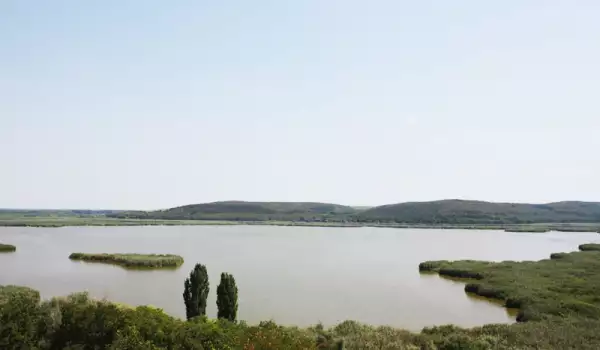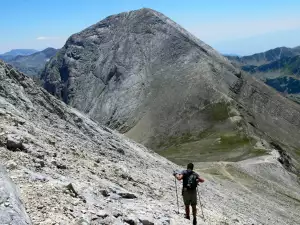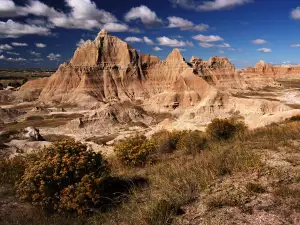Srebarna Reserve

Srebarna Reserve is an incredibly rich and beautiful natural area in northwestern Bulgaria. Srebarna was declared a reserve in 1948 and in 1983 became one of the natural parks in the country, which are included in the list of World Natural Heritage Sites of the international organization UNESCO.
Previously, in 1975 Srebarna was included in the Ramsar Convention to protect wetlands of international importance, and in 1977 it was declared a biosphere reserve by UNESCO.
Srebarna Reserve includes natural areas around the lake Srebarna and the natural science museum adjacent to the reserve. Biosphere Srebarna Reserve is located within walking distance of the same- titled Bulgarian village and is located 16 kilometers west of the Danube town of Silistra and 2 km south of Danube itself.
The origin of the name of Srebarna is related to several interesting legends. One of them tells how Srebrun Khan died in this area in the heavy and unequal battle with Pechenegs.
Another legend associates the origin of the name of Srebarna Reserve comes from a boat buried on the banks of the swamp, which was full of silver. According to many, the most credible and acceptable as true is the third story. According to this legend, the name comes from the incredibly beautiful scenery in the area of Srebarna Reserve, which occurs at full moon night. When the moon is high, its impact in the waters of the lake creates the illusion of molten silver.
For a considerable time, at the beginning of last century Srebarna Reserve was not within Bulgaria. In 1913 with the signing of the Bucharest peace treaty, the park and Southern Dobrudja fall within Romania. In 1940 with the signing of the agreement Kraiova, Dobrudja again passes into the territory of the Bulgarian state, and the Srebarna Reserve along with it. In 1911, Alex Petrov became the first Bulgarian, to begin working in the Srebarna Reserve. He was fascinated by the beauty of the birds and planned a series of expeditions.
1990 Srebarna was declared an Important Bird Area. Its extremely rich avifauna is predetermined by the fact that Srebarna Reserve is on the main migration route of birds migrating between Europe and Africa, called "Via Pontica". This reerve breeds globally threatened species such as Dalmatian Pelican (Pelecanus crispus), Pygmy Cormorant (Phalacrocorah pygmeus), Ferruginous Duck (Aythya nyroca).

In 1940 Alex Petrov works again at the Srebarna Reserve to examine bird colonies nesting there. Before that, in early 19th century, Srebarna is visited by Felix Kanitz, and in 1880 Edward Austrian Hodek came here. He described his impressions in the article "The home of birds of passage". Srebarna Reserve in the past has been seriously injured by Leo von Kalbermaten who killed thousands of small and large herons here, to benefit from their feathers, which at that time was chief ornament in women's fashion in hats.
All of Srebarna Reserve is a guarded area of 600 hectares and has a buffer zone of about 540 hectares. The lake Srebarna is freshwater, and its depth ranges from 1 to 3 meters. It covers an area of 2 sq. km, and often swamps up. Throughout the Srebarna Reserve, there are 39 species of mammals, 21 reptiles and amphibians and over 10 species of fish - pike, bream, rudd, otter, crayfish, ordinary turtle, water rats, etc., as well as 179 species of birds that nest in the Srebarna Reserve. Among these are Dalmatian pelicans, cormorants, herons, deer, mute swan, greylag goose, duck, duck-hawk, bluehays, Bearded Tit and others.
The natural history museum in the Biosphere reserve "Srebarna" has stuffed creatures from the reserve. The museum is able to monitor the birds throughout the natural area. At the heart of the swamp, where pelicans nest is mounted video a camera and video link with pictures and sounds are transmitted to the display in the museum.
In the Eco Reserve were built gazebos for relaxation and observation sites. The Natural History Museum you can visit from 08:00 to 12:00 and 2:00 p.m. to 18:00 pm during the summer. In winter it works between the hours of 08:00 to 4:00 p.m. Unfortunately, the museum does not work on weekends, but here is where you can get a print for visiting Srebarna Reserve Which is one of the 100 national tourist sites. The site is part of a movement founded in 1966 100 National Tourist Sites Bulgaria.















